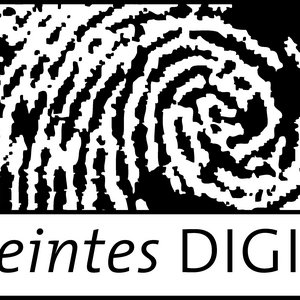Vox Alia by Annette Vande Gorne
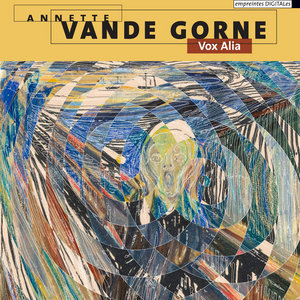
[EN]
The Cycle “Vox Alia”
Today, “academic” or “serious” electroacoustic music seems to be reaching maturity. It is moving away from purely technological research, from adapting to — and hijacking — tools (first the analog ones, then software) and instruments. It is also moving away from the sole concern of sound, both in description (Pierre Schaeffer’s treatise on sound objects) and analysis (formants, spectrum), and in its various synthesis and transformation techniques. Like all other music today, acousmatic music is more concerned with issues of writing, language, and, in the case of this work, expressivity. This is because acousmatic music, by its very nature fixed on a memory support, is freed more than any other from the technological issues often tied to interactive relations with acoustic instruments or real time.
Is it because it is the signature, the audible trace by which each living being identifies itself and by which it marks others and detects their intentions? The voice remains the prime emotional and musical vehicle. It is the ancestral medium of all direct communication.
“Vox Alia” (1992-2024) is a cycle of five pieces which, through electroacoustic processing, retain traces of the melodic, rhythmic, and timbral qualities of this marvelous medium, in the service of a character, an affect, a collective ritual, an emotional or spiritual or anthropomorphic expression among others. The spatial writing of sound sequences plays an essential role in reinforcing the desired expression and clarifying polyphonies.
Moreover, the first work in the cycle, “Vox Alia I — Affetti” (1992-2000), itself in five movements, validated the expressive capabilities of multiphonic space before I went on to compose the acousmatic opera “Yawar Fiesta” (2006-12).
====
Sound, Voice, Meaning
The voice as used by musicians today is deciphering hitherto unknown territory. The voice deprived of meaning. Voice deprived of text. Pure voice, raw voice, the almost primitive voice. The voice frees itself from the traditional medium of words. Acousmatic music allows for all manner of variations in the relationship between the pure sounds of the voice and a new relationship with the text. From sound to meaning, to language.
As a choirmaster since 1965, the multiple relationships between text and music offered by Western musical history — from Gregorian chant to electroacoustic works — and all the expressive capabilities of the human voice have led me to explore the vast field of possibilities in the electroacoustic studio.
This program explores all the facets of this relationship: pure voice, sacred song, song and space, scream and voice emitted while breathing in, spoken text dispersed and integrated into the musical flow, dramatization through the musical context, the use of dialogue…
– Annette Vande Gorne [i-25]
====
About the Cover Illustration
Luc Beauchemin, “Skrikch Skrakch” (2022-23) from the five versions of “Skrik” [The Scream] (1893-1917) by Edvard Munch.
[FR]
Le cycle «Vox Alia»
Actuellement, la musique électroacoustique «académique» ou «savante» semble atteindre sa maturité. Elle sort des recherches purement technologiques, des adaptations à, ou détournements des outils (analogiques puis logiciels), de la lutherie. Elle sort aussi de la seule préoccupation du son, tant sa description (le traité des objets sonores de Pierre Schaeffer) que son analyse (formants, spectre) et ses différentes techniques de synthèse ou de transformations. Comme toute autre musique, aujourd’hui la musique acousmatique, parce qu’elle se trouve, par sa nature fixée sur un support-mémoire, dégagée plus que toute autre des questions technologiques souvent liées aux relations interactives avec les instruments acoustiques ou le temps réel, s’intéresse plus aux problèmes d’écriture, de langage, et dans le cas de cette œuvre, à l’expressivité.
Est-ce parce qu’elle est la signature, l’empreinte sonore à laquelle chaque être vivant s’identifie et par laquelle il repère l’autre, et détecte ses intentions? La voix reste le premier vecteur émotionnel et musical, le support ancestral de toute communication directe.
«Vox Alia» (1992-2024) est un cycle de cinq pièces qui, à travers les traitements électroacoustiques, conservent traces des qualités mélodiques, rythmiques, spectrales de ce merveilleux médium, au service d’un caractère, d’un affect, d’un rituel collectif, d’une expression émotionnelle ou spirituelle ou anthropomorphique entre autres. L’écriture spatiale des séquences sonores joue un rôle essentiel de renforçateur de l’expression désirée, et de clarification des polyphonies.
La première œuvre du cycle, «Vox Alia I — Affetti» (1992-2000), elle-même en cinq mouvements, a d’ailleurs validé les capacités expressives de l’espace multiphonique avant la composition de l’opéra acousmatique «Yawar Fiesta» (2006-12).
====
Son, voix, sens
La voix telle que les musiciens l’emploient aujourd’hui déchiffre des terres inconnues jusqu’alors. La voix privée du sens. La voix privée du texte. La voix à l’état pur, la voix brute, la voix primitive presque. La voix se libère du support traditionnel jusqu’alors qui était celui des mots. La musique acousmatique permet toutes les variations de relations entre les sons purs de la voix jusqu’à un nouveau rapport au texte. Du son au sens, au langage.
Cheffe de chœur depuis 1965, les rapports multiples entre texte et musique qu’offre l’histoire musicale en occident — du grégorien aux œuvres électroacoustiques — et toutes les capacités expressives de la voix humaine m’ont engagée à en explorer le vaste champ des possibles en studio électroacoustique.
Ce programme parcourt toutes les facettes de cette relation: voix pure, chant sacré, chant et espace, cri et voix émise en inspirant, texte parlé dispersé et intégré dans le flux musical, dramatisation par le contexte musical, mise en dialogue…
– Annette Vande Gorne [i-25]
====
À propos de l’illustration de couverture
Luc Beauchemin, «Skrikch Skrakch» (2022-23) d’après les cinq versions de «Skrik» [Le cri] (1893-1917) d’Edvard Munch.
Tracklist
Credits
empreintes DIGITALes 2025
Image: Luc Beauchemin, “Skrikch Skrakch” (2022-23)
IMED 25196_NUM
License
All rights reserved.Recommendations
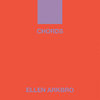 CHORDS
CHORDSby Ellen Arkbro
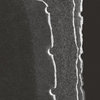 I Know the Number of the Sand and the Measure of the Sea
I Know the Number of the Sand and the Measure of the Seaby Lea Bertucci + Olivia Block
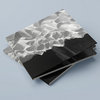 A Static Place /Remain
A Static Place /Remainby Stephan Mathieu
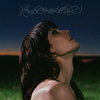 Hymnal
Hymnalby Lyra Pramuk
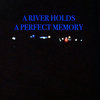 a river holds a perfect memory
a river holds a perfect memoryby felix taylor
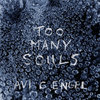 Too Many Souls
Too Many Soulsby Avi C. Engel
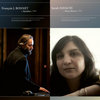 Banshee / Basse Brevis
Banshee / Basse Brevisby François J. Bonnet / Sarah Davachi
